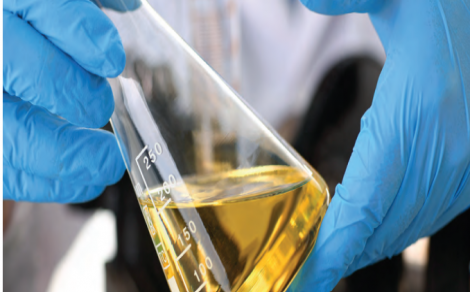Standards Update: Contamination control takes big step forward

Dr Barry Verdegan, Ph.D. looks at the revised standard ISO 11171 Hydraulic fluid power – Calibration of automatic particle counters for liquids.
Contamination control is essential for the reliable operation of equipment in hydraulic, diesel, aerospace and similar applications. Particle counting measures contaminant concentration as a function of particle size and is used to evaluate the effectiveness of contamination control programmes and the filters used to remove contaminants from fluids.
Meaningful comparisons of fluid cleanliness levels and filter performance data are only possible if particle counters are calibrated to the same standard. ISO 11171, developed by ISO/TC 131/SC 6, is the internationally accepted standard for the calibration of liquid automatic particle counters used for hydraulic fluids, aviation and diesel fuel, engine oil and other petroleum-based fluids.
Primary calibration suspensions
To maintain traceability to the internationally accepted definition of a metre, ISO 11171 relies upon primary calibration suspensions, Standard Reference Material SRM 2806, certified by the US National Institute of Standards and Technology (NIST). The year 2016 was pivotal for contamination control. A new batch of SRM 2806, SRM 2806b, was released to the market that yielded particle sizes about 10% larger than previous batches of the material. Due to pent up demand, supplies of SRM 2806b were rapidly being depleted and certification of a new batch of SRM 2806, SRM 2806d, was initiated.
A new revision of ISO 11171, ISO 11171:2016, allowed particle size to be reported in units of either µm(b) or µm(c), where µm(b) refers to the actual SRM 2806b certified particle size, while µm(c) sizes remained unchanged but were obtained by mathematical conversion of µm(b) sizes. There was considerable interest in determining the concentrations of particles smaller than 4 µm(c) for applications such as high-pressure diesel fuel systems.
As a result, the use of light scattering particle sensors increased, while light extinction particle counters continued as the mainstay for industry. For particles larger than 30 µm(c), the uncertainty in results was undesirably high, even though data for these sizes is critical for some applications.
Collectively, these factors resulted in immediate and significant impacts on industry. While the uncertainty for SRM 2806b was within stated limits, certain otherwise acceptable fluids and filters were failing to meet fluid cleanliness level and filter performance specifications, even though nothing had changed.
Measurement uncertainty
Reported particle concentrations were observed to be 2 to 8 times greater with SRM 2806b calibrations compared to SRM 2806a. The introduction of alternative particle sizes reporting conventions resulted in confusion, as some laboratories reported in µm(c) to be consistent with existing specifications, while others chose to report in µm(b) sizes obtained directly from SRM 2806b. Further, it was apparent that, unless something changed, a size shift could result each time a new batch of SRM 2806 was certified simply due to measurement uncertainty.
To address the challenges, ISO/TC 131/SC 6, in partnership with NIST, initiated an ambitious programme to revise ISO 11171 and the SRM 2806 certification protocol. As a result, ISO 11171:2020 establishes µm(c) as the sole particle size reporting convention and eliminates the µm(b) reporting option.
SRM 2806 will continue to be used for primary calibration at particle sizes below 30 µm(c) while polystyrene latex will be used for primary calibration at larger sizes. FP022354:16 December 2020 The definition of µm(c) remains consistent with past versions of ISO 11171.
-
PPMA 2025
23 September, 2025, 9:30 - 25 September, 2025, 16:00
NEC, Birmingham UK -
Advanced Engineering Show 2025
29 October, 2025, 9:00 - 30 October, 2025, 16:00
NEC, Birmingham UK










